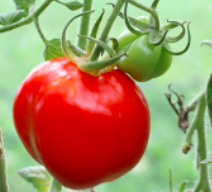56 Fruit
A fruit is a ripened or matured ovary.


Fruit parts
As the fruit matures, the swollen ovary wall becomes known as the pericarp. The pericarp has 3 layers, which can be fleshy or dry, thick or thin:
- The outermost layer, which we call the ‘skin’, is the exocarp.
- The middle layer, the ‘flesh’ or ‘pulp’ is the mesocarp.
- The innermost layer, which we call the ‘stone’, is the endocarp. (The endocarp protects the seed, it is not itself a seed.)

Types of fruits
There are many different types of fruit, but within the context of this unit, we will only look at the most common types of simple fruit.
Simple fruit– 1 flower- 1 fruit.
There are dehiscent and indehiscent fruits.
Simple dry fruits that split are dehiscent – the fruits split open at maturity to release the seed.
Can you think of some plants whose fruit is dehiscent?
Simple dry fruits that don’t split are indehiscent – the fruits do not split open when mature.
Can you think of some plants whose fruit is indehiscent?
